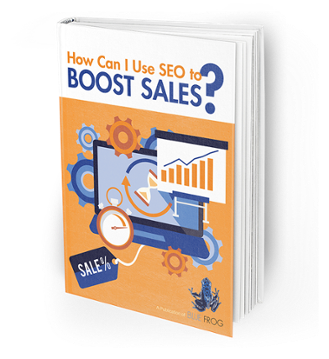
Creating a business blog and updating it regularly can help boost traffic on your website, establish yourself as an authority in your industry, and encourage relationships with current and potential customers. But one of the biggest benefits of writing consistent, regular blog entries is that it can exponentially increase your search engine rankings.
How Does Business Blogging Improve Your SEO?
Each page on a website is indexed by Google, Bing, and other search engines so that the more pages of content you have, the easier you are to find. Expanding the reach of your brand is as simple as creating a large volume high quality content; the more good content you have, the broader your reach will become. Plus, new activity on your website prompts Google and other search engines to check your pages more frequently for new content.
What’s easy in principle, however, might not seem so easy for you to implement in practice. Creating quality content can seem overwhelming, and adding pages of content to your website randomly can soon lead to a site that’s cluttered and difficult to navigate. Blogging solves this problem elegantly. Each new blog post is its own new web page, but all of them are collected neatly into one section of your website.
Each blog post helps increase traffic to your website by boosting the amount of fresh content indexed on your site. Because it will continue to be indexed for as long as the page is live, traffic to your blog can have significant long-term impact on your website. In fact, your blog posts can continue to be equally or more effective over time as the day you publish them. (HubSpot reports that about 70% of its blog traffic and 90% of its leads come from old blog posts!)
Optimize Your Blog Posts for Maximum SEO Effect
In order to get the most from your business blogging, follow these tips on how to blog for maximum SEO impact. First, identify the keywords for which you are hoping to improve your business’ search engine rankings. Identifying quality keywords using keyword research is one of the most important first steps to optimizing your website. Keywords are the “key” words and phrases (called “long-tail keywords”) that internet searchers type in to find a business—hopefully your business—that answers their question or meets their needs. If you are a Des Moines marketing agency, for example, good keywords may be “SEO Des Moines” or “marketing Des Moines” as well as longer search phrases like “average cost of HubSpot services from Des Moines marketing agencies.”
Use Keywords Naturally
It’s important to use your target keywords strategically in your blog posts without “keyword stuffing,” i.e., packing your content awkwardly with keywords where they don’t really fit. As search engines have become “smarter” using more advanced algorithms, it’s less important to have words and phrases exactly matched in your content. Google can even recognize many words that are similar in meaning but not appearance (such as “professional” and “expert”). In fact, these smarter search engines can actually penalize pages that seem to have packed their content unnaturally with keywords at the expense of actual value. If you have some awkward keywords, like location-specific services you provide, consider adding in a footer blurb about your business services and location where you can more easily and naturally incorporate these.
Wrong: "SEO Des Moines is our specialty."
Better: "Specializing in inbound marketing and SEO, Des Moines-based Blue Frog..."
Best: "Blue Frog Marketing provides expert inbound strategy and SEO services to the Des Moines metro area and beyond."
Use Keywords Strategically
For the biggest effect, use keywords in the headings, titles, and URLs of your blog posts. Even if your posts are short, adding section headings improves readability and gives you more opportunity to improve the post’s SEO. Incorporate keywords into alt text you use to describe images and photos, too. Whenever you include an image on a web page, make sure it has a title and alt text that describe it accurately, incorporating relevant keywords when appropriate. Focus on a few target keywords rather than trying to incorporate too many. Finally, use keywords throughout the body of your text, but don’t repeat them too many times (try not to use them more than five times each).
Write Effective Meta Descriptions
Finally, make sure you take advantage of the opportunity to create meta descriptions for each of your business blog posts. These are the short (140-160 character) descriptions that a search engine displays under each page title in its results page. Your goal in writing a great meta description is to accurately describe each page’s content in a way that entices a reader to click through and open it. Try to naturally incorporate keywords into your meta descriptions; while they do not directly impact your site’s SEO, a reader searching for “Des Moines SEO” will be more likely to click on a site that has a meta description mentioning the agency is “a leader in marketing services in the Des Moines area, including SEO and inbound marketing strategies.”
If you need help optimizing your website for SEO, creating quality content, or getting your business blog up and running, contact the marketing and content creation professionals at Blue Frog. To learn more about how improving your SEO can help boost your business, download our complimentary eBook by clicking the link below.



